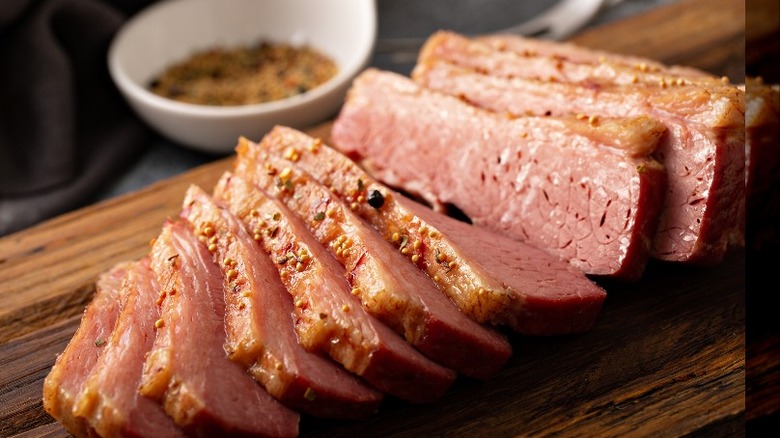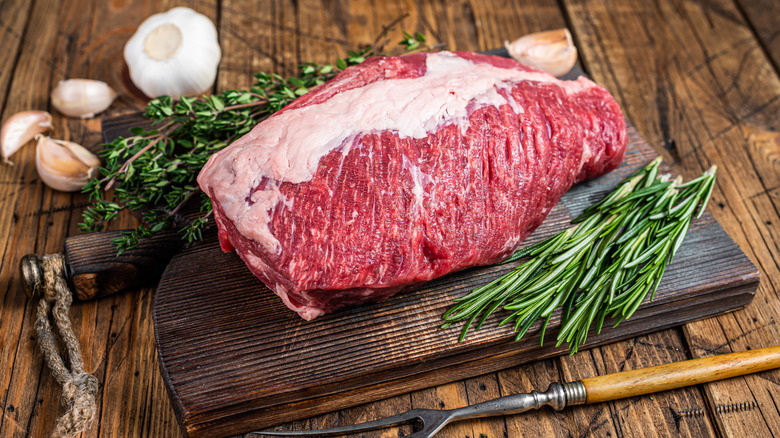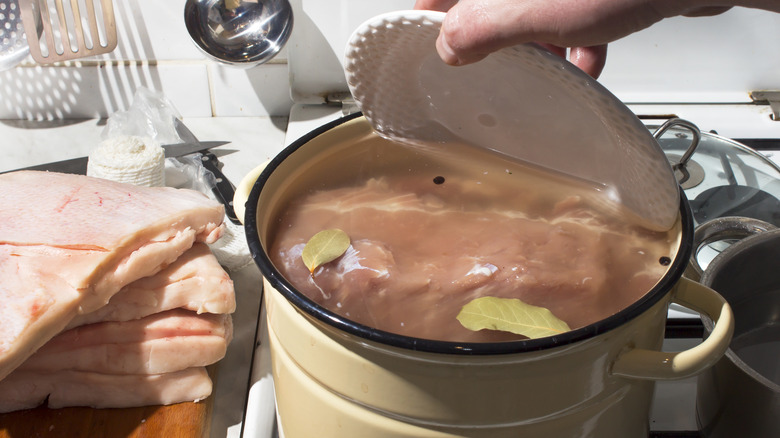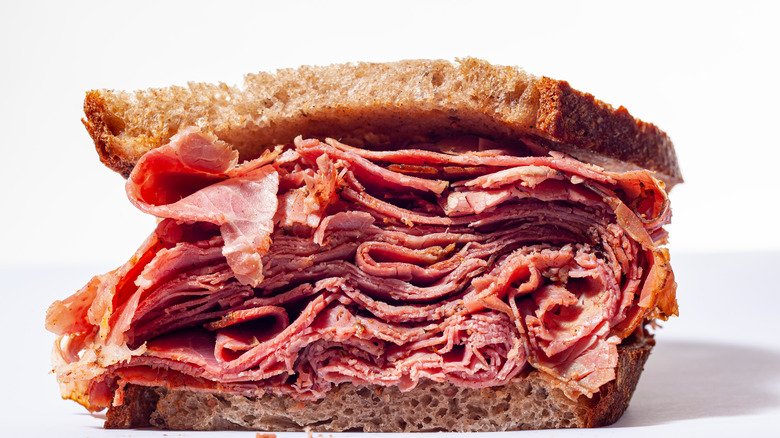The Big Difference Between Corned Beef And Pastrami
There are plenty of food debates online that pose some of lifes most unanswerable questions. Is a hot dog or taco a sandwich? Is cereal soup? Are boneless chicken wings just chicken nuggets in disguise? Do you eat rice with a spoon or a fork? The list goes on and on.
But of all of the great food debates, one lesser discussion is the difference between two meats that for all intents and purposes are arguably the same, but prepared in such a way that they create two very different flavor profiles, despite their similar looks. And they're used in different ways, too. Corned beef is typically served with cabbage as a traditional Jewish or Irish dish, created by throwing the cut of meat called brisket into a pot with cabbage and potatoes (via Smithsonian Magazine), while pastrami is typically sliced thin after it's cooked and served in deli sandwiches, preferably on rye with spicy mustard (via Foods Guy).
Types of meat used
The interesting thing about the two meats is that the base is often, though not always, the same. They are both most frequently made from brisket meat, says Chowhound, but while corned beef is almost always made that way, pastrami sometimes veers into other varied meat options, including beef round or naval, and even pork or turkey.
According to Utah Stories, pastrami is typically made using beef plate in the U.K., while in the U.S., the typical meats are "beef brisket, beef round, and turkey." Corned beef, on the other hand, remains a brisket-based product — a notoriously expensive cut of beef, although ironically, its origins were as a rationed dish served during World War I and World War II. The Irish produced it using "local cattle and imported salt," and it was considered it a luxury product in its homeland, whereas it is an everyday option in America. The Jewish community simply purchased the meat from butchers.
Preparation and cooking method
As My Recipes notes, "corned beef is cooked by boiling, and the only spices are the ones that were in the curing marinade." On the other hand, "pastrami is rubbed after curing with a spice blend that can vary from deli to deli, but is almost always heavy on both ground black pepper and crushed coriander seeds. ... pastrami is then smoked to cook it."
There's the rub: the smoking. The biggest difference, according to Kevin Can Cook, is that smoking element, which is utilized for pastrami, but not for corned beef. The other difference is that dry rub. Whereas corned beef only gets a brine, pastrami gets brine and dry rub. It is something he notes most people would not be aware of unless they make it themselves, but is an important distinction to make when preparing either meat to ensure you get the taste you are looking for.
What about nutritional value?
Any meat that is salt-cured has to have some serious sodium issues. And corned beef and pastrami are no exception. While they have their health benefits, they also boast some nutritional no-nos. A three-ounce serving of corned beef, says Healthline, has 213 calories, 15 grams of protein, 16 grams of fat and 827 mg of sodium. Unfortunately, that is "more than one-third of the" daily recommended value for sodium. But on the bright side, zero carbs!
A three-ounce serving of pastrami, on the other hand, holds 124 calories, 19g of protein, 5 grams of fat and 753mg of sodium. It, too, has zero carbs. So while it will save you some carb issues, the sodium elements of both may not be exactly favorable for the health conscious. But at the end of the day, both meats will definitely fix any cravings for nice, salty, savory bites, fit for any meal you might be in the mood for.



